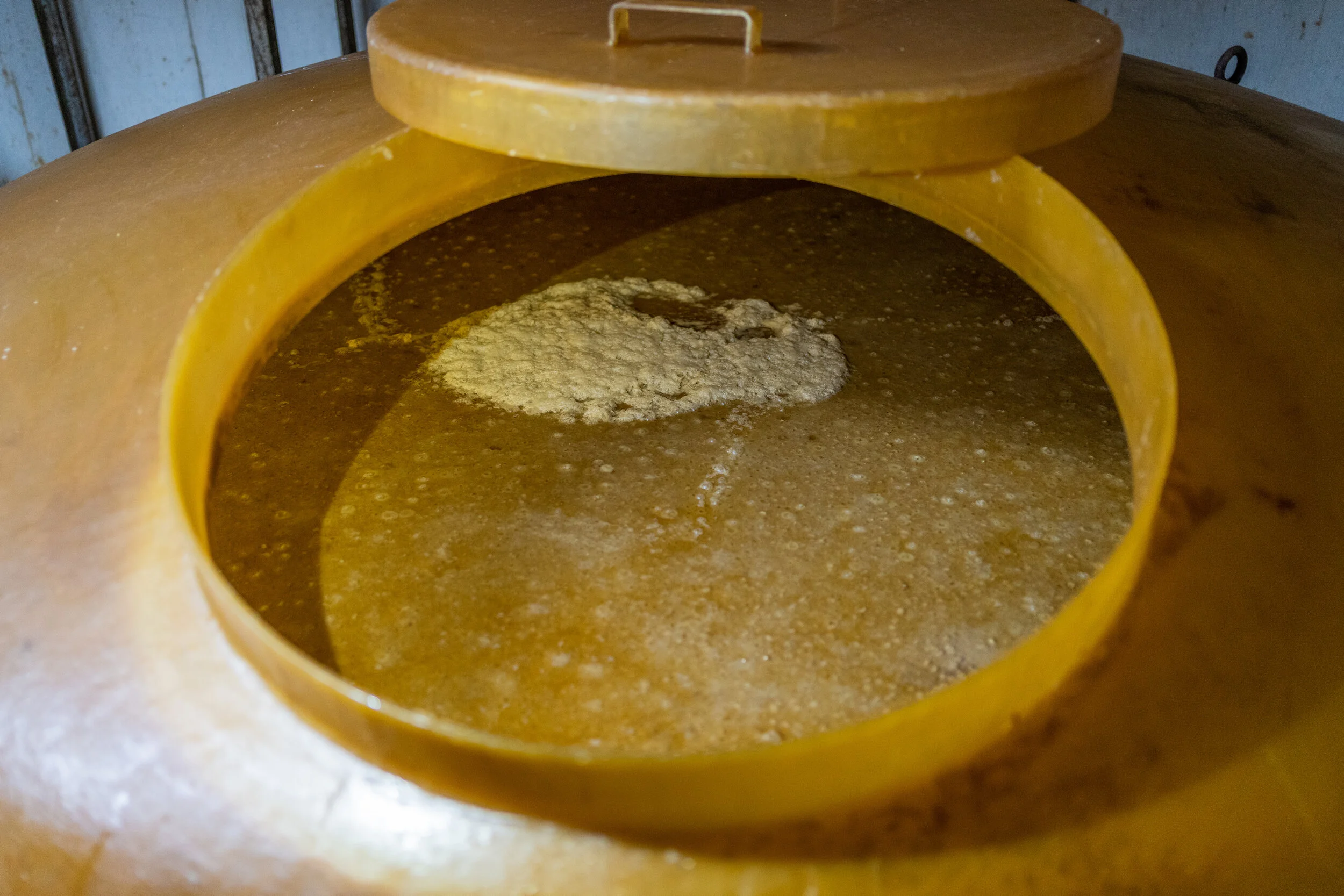Make delicious food even more delicious - Usu-kuchi soy sauce
Last time when I went to back Japan, I walked around in Kyoto, Hyogo and Nara, and experienced seeing very beautiful Japanese traditional culture and food. I also visited soy sauce houses and miso houses.
I’ll introduce a soy sauce house called Suehiro shoyu and light soy sauce known as Usu-kuchi they specialize in.
Usu-kuchi (light soy sauce) is saltier than Koi-kuchi (dark soy sauce).
Usu means light. Koi means dark. It describes the colour when you are talking about soy sauce, but sometimes it can also refer to the flavour.
Usu-kuchi (light soy sauce) is lighter in colour and on the other hand koi-kuchi (dark soy sauce) is darker in colour. However, usu-kuchi is saltier than koi-kuchi.
It seems like that koi-kuchi should be saltier than usu-kuchi, because koi-kuchi smells strong and is darker.
Everything depends on the fermentation process. The longer it goes on a fermentation process, the more it takes on colour.
Usu-kuchi takes one-third of the fermentation time compared to koi-kuchi, because a lot of salt water is used for usu-kuchi so if the process goes longer, bacteria which facilitates the fermentation dies.
The best way to use usu-kuchi is for simmered dishes, soup or tsuyu because flavuor and umami is lighter so it just enhances the taste and colour of ingredients.
About Suehiro shoyu
Introduction
Last year, I went to Tatsuno, Hyogo. It is surrounded by nature and is a very relaxing place. These mountain and rivers create many varieties of high-quality food.
Tatsuno, Hyogo
There is one shoyu house known as Suehiro Shoyu. It took 7 hours to get there. The reason why I decided to visit there was because they have specialised in usu-kuchi for over 130 years which is very popular in West Japan.
I have not heard of Shoyu houses which mainly do Usu-kuchi except for Suehiro Shoyu in Japan. Mr Suehiro showed me around in his shoyu house.
Mr Suehiro standing in front of entrance.
What Impressed me the most
Mr Suehiro says “ Aspergillus oryzae, known as koji malt, live in this wood and make our usu-kuchi. We can't make our usu-kuchi without this koji malt. When I open the lid of these tanks, koji malt gets into them to help the fermentation.”
Indispensable koji malt living in the wood
The fermentation process
“If you live here, it is 100% that Koji malt that will make you become very healthy”
After I listened, I took a deep breath and I felt my lungs feel fresher.
“Everyone thinks all you need to do to make shoyu is to wait for a couple of months and squeeze it, but in this simple process the most important thing is how we talk with the koji malt. We have to listen when the koji malt needs to be taken care of. Identifying when is the best time to take care of is a professional skill.” he said.
Checking how the fermentation is going
Shoyu pressing
Background of Suehiro Shoyu - the beginning of natural brewing
They are committed to making usu-kuchi mainly through natural brewing, although it’s tough to colorise usu-kuchi with it.
“We have improved the kinds of seed malt known as tane koji, as well as the brewing span and other processes. We focus on natural brewing even though it is easier to colour usu-kuchi with machines,” Mr Suehiro says.
They started making natural brewed shoyu since 50 years ago, when someone who sold natural food had requested it.
However, it must be very tough to keep making the pale color of shoyu with natural brewing, because I could not find other shoyu houses which mainly do usu-kuchi with natural brewing in Japan.
What food goes with usu-kuchi?
It goes with simmered vegetables, miso soup, hot pot and tofu. It can be used instead of lemon and salt as well.
Mr Suehiro said “we recommend adding usu-kuchi to roast beef and Raw egg. It increases the deliciousness of roast beef and raw egg and allows you to enjoy the taste of them. For example, if you use it for fish, you can tell whether the quality of fish is good or not, so you cannot deceive anyone compared to koi-kuchi shoyu”.
Their recommended koi-kuchi
Koi murasaki
Taste: Rich
Koi Murasaki is restock shoyu. Restock shoyu is shoyu which is stocked with shoyu to pickle soy bean, rice and barley instead of using salt water. This shoyu is stocked 3 times through the luxurious shoyu. I like using this shoyu for grilled rice ball!
Usu murasaki
Taste: Refreshing
Usu Murasaki gives very mild taste by using a lot of koji. I recommend using this shoyu when you want to make the most of the original taste of ingredient. I used this shoyu for rice with raw egg.
Kaoru murasaki
Taste: Smoky
Kaoru Murasaki is shoyu smoked directly. It matches with olive oil, cheese and salad. It will make your drinking time more amazing.
I will write a blog about food recipes with usu-kuchi soy sauce available in Melbourne! If you have a request, please let me know. Thanks for reading through!
Writer: Kohei Shibuya
Reference
Website Suehiro Shoyu
Blog about Suehiro shoyu
Usu-kuchi is saltier than Koi-kuchi










